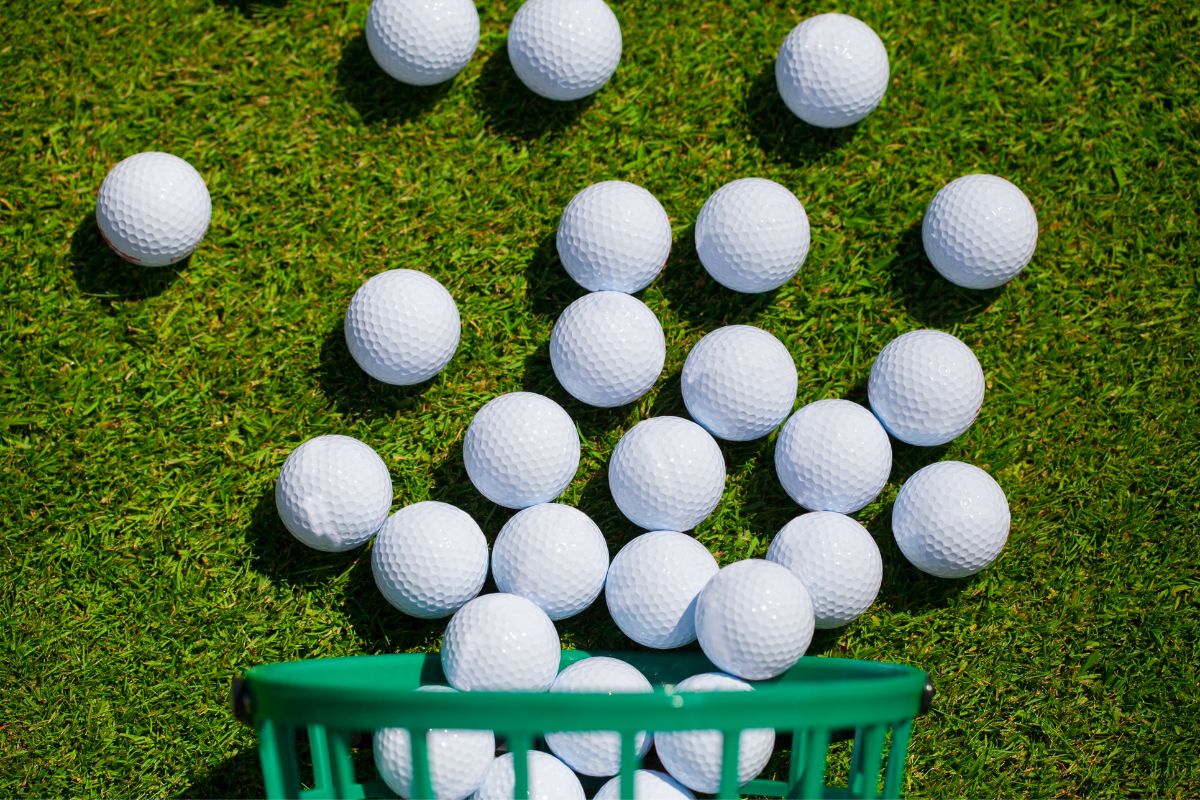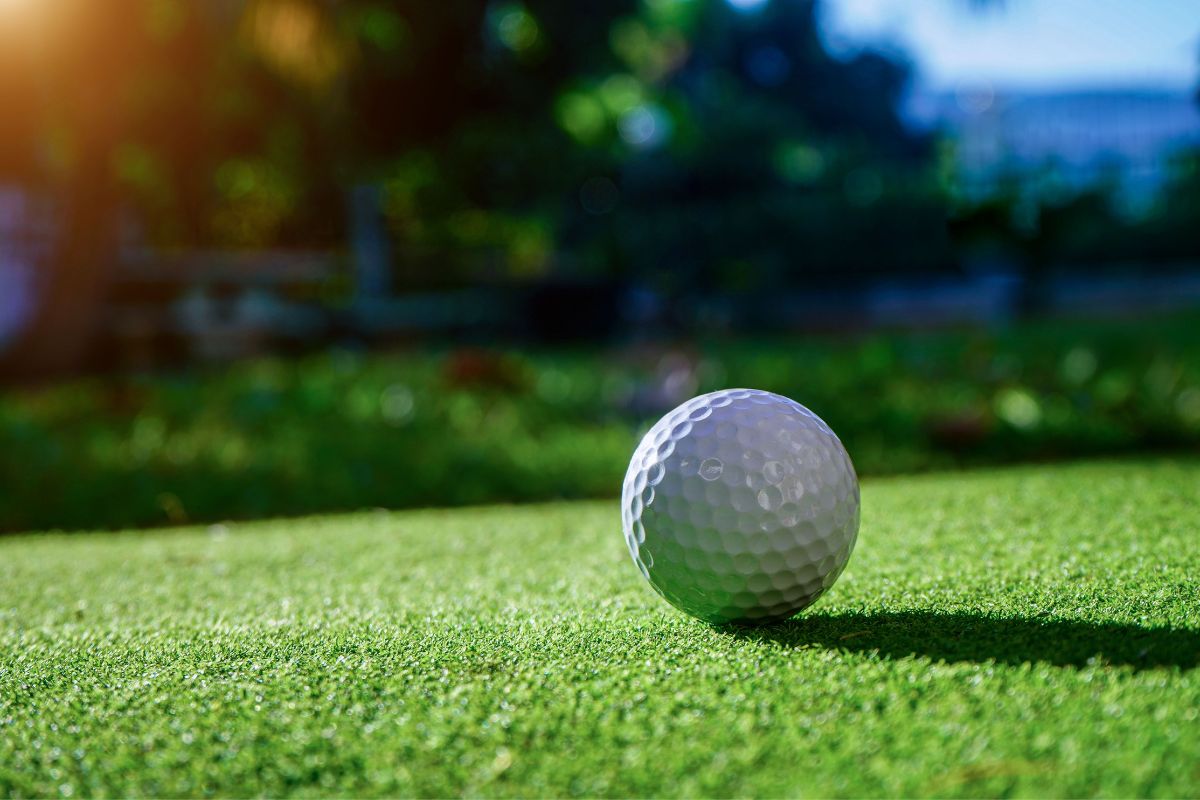Most products have an expiration date, but there are some items that you wouldn’t expect to have a shelf life, like golf balls.
You may have paid a lot for a box of high-quality, premium golf balls, but this doesn’t mean that they are going to last forever.

There’s always the risk of you losing a ball – or more – but can golf balls go bad?
In short, the answer is yes! On average, golf balls tend to last around ten years, as long as they are stored away correctly.
Golf balls will age, but they tend to perform well as long as they are well cared for.
We’ll cover more about the life of golf balls in this post, including how to tell if your golf ball has spoiled and how to increase the lifespan of your golf balls.
Can Golf Balls Go Bad?
Yes, golf balls can go bad, and often do so! You may notice that a golf ball doesn’t fly high or spin enough. These are some indications that the ball needs replacing.
Signs That Your Golf Balls Have Gone Bad
There’s more chance of you losing a golf ball on the course before you see wear and tear signs on it.
Nevertheless, if you can keep the same ball for a few rounds, here are some signs that will tell you when you need a replacement.
Scuffs and Deterioration
Visible signs of wear and tear are a good sign that the ball is damaged. Look for scuffs and scratches on the outside of the ball.
These will prevent the grooves from gripping the ball to deliver the best spin and speed.
The covers on golf balls are usually made from surlyn and urethane. Urethane is a softer material that usually surrounds premium balls.
These covers can scuff quickly if they hit a bunker or cart path.
Surlyn covers are very strong, but this changes if they are combined with urethane. A lot of golf balls are made with a surlyn cover, urethane casing, and solid rubber interior.
These three characteristics make the surlyn weaker, making it scuff as easily as urethane.
Just a small scuff may affect your distance by roughly six yards.
If this happens, the ball will experience different aerodynamics, increasing the drag and lowering the carry distance, which makes the ball fly irregularly.
Bounce of the Ball
The way the ball bounces affects the stopping force on shorter strikes and the roll on longer ones.
Place the old golf ball in one of your hands and a new one in the other one. The balls should be the same size and make to ensure a fair test.
Drop the balls onto a hard, flat surface and look at the way they bounce. If both of the balls bounce in the same way, the older balls are still sufficient to use for the time being.
Distance
If your distance begins to drop for no apparent reason, you may need newer balls. As mentioned before, a single scuff can affect your shots by roughly six yards per shot.
However, don’t throw your ball away before you are certain that the ball is the problem, as you may need to look at your swing.
Balance
Balance affects aerodynamics and leads to poor flight from more drag. This causes less carry distance. Balls that are well-balanced will travel steadily to deliver the best distance possible.
The following test shouldn’t be carried out on a golf course as you will need Epsom salts and water.
Mix Epsom salts into a jug of water and set the ball in the fluid. The ball should float under the water’s surface line, so you can see the lighter part of the ball clear from the top. This is a sign that your used balls are well-balanced.
If the balls start to sink, or the heavier part is on the top, the balls are at the end of their lifespan and need replacing.
Launch
If the ball finds it difficult to become airborne, you will need a new one. This is a sign that the ball is unbalanced, or the exterior layer dimples are affecting its capability to fly longer and further.
How To Increase Your Golf Balls Lifespan
Here are some tips to increase the lifespan of your golf balls.
Wipe The Clubface
A simple way of increasing the longevity of your golf ball is by wiping your clubface ahead of each shot.
Make sure that you have a towel in your golf bag before each round to wipe any moisture off of the club.
Clean The Balls
Golf balls can pick up mud, grass, (see also: Grass Thicker)and dirt with every game. If you don’t clean this off, the dirt will press into the ball with each shot you strike. Soon enough, the dirt will scrape the coating, affecting the launch, distance, and flight.
Don’t Bounce The Balls

It can be hard to resist bouncing golf balls wherever you can, but it’s best to avoid doing so, particularly on harder surfaces.
Never throw your golf balls around, as this can lead to scuffs that affect their lifespan.
Work On Your Aim
Improving your game will help your golf ball avoid rough surfaces, like cart paths and sand traps. Practice at the range, go over your strike, and work on your aim to improve your accuracy.
Spending more time on the fairway can make a big difference to the overall condition of your balls.
Storage
Heat damage is less likely to affect your golf balls, but it is still a possibility. Storing golf balls in settings exceeding 170°F can make the polymers melt.
You can avoid this occurring by storing your balls in a cool, dry location, away from any direct sunlight.
The Bottom Line
Golf balls can go bad, but the extent of this varies on several factors. In most cases, golf balls can last for a few hundred golf rounds, provided that you don’t lose them in the process.
You can increase the longevity of your golf balls by cleaning them regularly, storing them away from heat, and avoiding bouncing them.
Keep examining your golf balls regularly and dispose of any that are scratched, damaged, or unbalanced.
- Can You Bring Your Own Clubs To Topgolf? - November 15, 2022
- How Wide Is A Golf Cart? - November 15, 2022
- How Long Does 9 Holes Of Golf Take? - November 15, 2022
